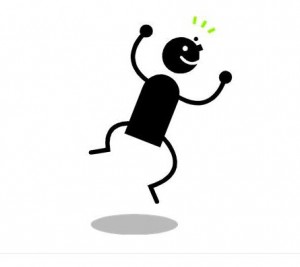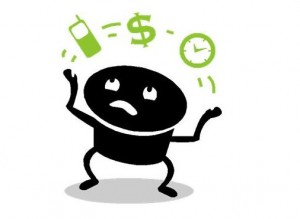Tag: mindful leadership
A few words you might want to reflect upon
As I truly had a re-energizing and stimulating weekend in my silent retreat in the mountains, let me share this quote with you, which I find very inspirational:
“When I was 5 years old, my mother always told me that happiness was the key to life. When I went to school, they asked me what I wanted to be when I grew up. I wrote down ‘happy’. They told me I didn’t understand the assignment, and I told them they didn’t understand life.” John Lennon (via goodreads.com)
Have a great week and thanks for reading!
Jenny
Challenging Myself: A Mindfulness Retreat
 Tomorrow, I will be going on a three day silent retreat; it will be the first time that I will be staying a couple of days. So far, I have ‘only’ experienced one day at a time. The most intriguing thing for me is not the fact that there will be no speaking; nor is it the fact that I will be alone with myself, looking deeply into what lies beyond the conscious mind. No, it is that I will be sharing my room with somebody I don’t know and I won’t get to know as we don’t speak.
Tomorrow, I will be going on a three day silent retreat; it will be the first time that I will be staying a couple of days. So far, I have ‘only’ experienced one day at a time. The most intriguing thing for me is not the fact that there will be no speaking; nor is it the fact that I will be alone with myself, looking deeply into what lies beyond the conscious mind. No, it is that I will be sharing my room with somebody I don’t know and I won’t get to know as we don’t speak.
Usually I like company and as a student I have always enjoyed these moments of sharing a room or an apartment with people. This time though, it will be different as there will be no ‘getting to know each other’. It will simply be a matter of non-judging, and adapting an appreciative attitude towards the other person for a couple of days. Well, this might be part of the experience but it still sounds a little ‘frightening’ to me!
I am almost certain that I will encounter some reluctance to stay focused and it will be interesting to see how I will deal with these moments of ambiguity and uncertainty. I am sure though that the experience will make me grow and allow me to re-charge my batteries at the end of this year.
2013 has indeed been full of action and change. The road ahead is not yet 100% clear but the mist is starting to lift, like clouds hanging on the mountains and finally disappearing. I wonder what three days of silence will bring… definitely some rest and centeredness!
“The present moment is filled with joy and happiness. If you are attentive, you will see it.” Thích Nhất Hạnh

Connecting the dots – Furthering Creative Innovation through Diversity
Just coming out of an excellent three-day course in Milan with Milton Bennett and Lee Knefelkamp, I could not help myself but to write these couple of sentences down, now that they are still fresh.
I learned that a person’s view on ethics depends heavily on his/her developmental status of learning or knowledge as identified in the so-called “Perry Scheme”.[1] The different positions in this scheme can in turn be very nicely integrated into M. Bennet’s “Developmental Model of Intercultural Sensitivity” (DMIS). The more a person moves up the Perry scheme, the more he/she is open, able to deal with ambiguity and a critical thinker making conscious choices based on active reasoning. The more a person moves from enthnocentrism to ethnorelativism in the DMIS, the more the cultural context will be included in his/her decision making processes and the more culturally appropriate behavior will be part of his/her cultural identity.
Thus in the ultimate stage of development in both models (DMIS and Perry Scheme), considered choices are made in face of legitimate alternatives; the person acts with contextual ethical commitment.
For me, this connection between learning/knowledge, ethics and intercultural communication certainly makes sense and opens up many different ways of exploring the field. Once a group is for example able to deal with difference, which normally happens between “minimization” and “acceptance” in the DMIS and position 5 in the Perry Scheme (constructing meaning), it will certainly add value to sustained innovation and creativity simply by bringing different perspectives into the discussion. Research has indeed shown that heterogeneous, diverse teams who are able to effectively work together (which requires a certain level of intercultural competence) produce much better results than when the teams are composed homogeneously, with people from the same background or with the same values.
Creative innovation is indeed something that many companies nowadays are striving for. The increasing acceleration of technology obsolescence with shrinking lifecycles – paired with an increasingly strict regulatory environment in the medical industry for example – is impacting already the way companies operate. Recent surveys are pointing out that currently the most innovative industries are the ones, which are able to better connect the commercial and technical dots.
And how do you connect these dots? Well, firstly by enabling cross-functional, virtual and multinational teams to effectively communicate and work together. Secondly, companies have to encourage dialogue and creative thinking by signaling that ideas can be tested out, even if sometimes in the end, they are not successful. Incentives and means have to be found to include and anchor not only intercultural competence criteria but also a reward mechanism for constructive disagreement as well as creative idea generation in policies, job descriptions and performance evaluations so that new impulses can be generated.
There is still much to be done here…I am ready, are you?
[1] Perry, W. (1970, 1998) Forms of Cognitive & Ethical Development in the College Years : Knefelkamp, L. « Introduction » ; Moore, W. Overview of the Perry Scheme.
Take-aways from D. Goleman’s presentation in Lausanne
Yesterday I had the chance to attend Daniel Goleman’s presentation at the IMD in Lausanne. The room was full and people were attentively listening to what was entitled: “How can Global Leaders focus for High Performance”. I had never seen Goleman live before and I must say that it was a very interesting and enriching conference!
Firstly, did you know for example that when somebody says something that hurts you or when you simply receive an email that annoys you, your full bodily reaction is activated (stress hormones being released, muscles ready to run etc.) exactly as if you were fleeing from a predator like in ancient times? The simple thought of a negative event can in fact already trigger that reaction…
Secondly, were you aware that there are three different kinds of empathy[1]?
- Cognitive Empathy (understanding the mental models of people)
- Emotional Empathy (coming from the mirror neurons, feeling physically what another person is feeling)
- Empathic Concern (you not only feel with the person and understand her/him but you are also inclined to help)
Thirdly, also interesting, were Goleman’s explanations around what differentiates a top leader from a “mainstream” one. Not astonishingly, three areas of focus[2] are needed:
- Inner Focus (understand, manage and lead yourself)
- Focus on other people (i.e. empathy, to be able to understand what other people are thinking, feeling, how to communicate with others etc.)
- Focus on other systems (the surrounding parameters, the forces that impact an organization)
Once all three are combined, leaders excel in their tasks and are also perceived by peers and employees to be thriving.
And finally, to my surprise, Goleman even brought a simple mindfulness exercise to the audience, who sat in silence for a while, listening to his voice giving the instructions. What an inspiring moment!
Mindfulness according to him is “fitness for the brain”, training attention and focus. The more it is done, the more the brain changes the way it operates and reacts to stimuli and the better one will also be able to “listen” to the info coming from the gut (the somatic markers).
Bringing mindfulness into the workplace using different formats and tools to deal with difference, furthering not only internal communications, innovation and creativity but also self-awareness and efficiency in teams is what I am focusing on as a consultant/coach/trainer. If you are interested in learning more, I would be very pleased to hear from you!
And to end with a really nice old eskimo proverb that my mindfulness teacher brought to my attention yesterday and that I found back here:
Yesterday is ashes; tomorrow is wood. Only today does the fire burn brightly
Mindful Leadership and the influence of emotions on trust
 In preparation of D. Goleman’s presence and presentation in Lausanne at the IMD later this week, I was reading some very interesting articles/research about emotions and their influence on trust.
In preparation of D. Goleman’s presence and presentation in Lausanne at the IMD later this week, I was reading some very interesting articles/research about emotions and their influence on trust.
As more and more leadership publications and organizational excellence discussions talk about emotions and how important these are for successful self-management, people-management and organizational functioning and well-being (for the company as a whole as well as for the people in it), I find their influence on trust highly important. Trust is indeed necessary for effective teamwork, functioning partnerships, management, social life etc. It really is the main ‘ingredient’ for making things happen, able to reduce the complexity that we are confronted at all times so that we can be together, work together, deal together in business matters and other things. Once lost, it is very difficult to re-build trust in whatever context.
Thanks to research conducted in the field of psychology and neuroscience we now slowly begin to better understand and value how our ‘brains’[1] function and why it is so important to listen to both of them. The idea, that certain emotions can influence trust is hence extremely interesting.
So far, I only knew of research identifying links between affective states (moods and emotions) and unrelated judgments[2] and not how specific emotions influence subsequent judgments. “Unlike moods, emotional states are typically shorter in duration (…)”[3] and they are more complex than moods. In their research, Jennifer Dunn and Maurice Schweitzer, found out the following correlation:
“Happiness and gratitude—emotions with positive valence—increase trust, and anger—an emotion with negative valence—decreases trust. Specifically, (…) emotions characterized by other-person control (anger and gratitude) and weak control appraisals (happiness) influence trust significantly more than emotions characterized by personal control (pride and guilt) or situational control (sadness). (…) Emotions do not influence trust when individuals are aware of the source of their emotions or when individuals are very familiar with the trustee.”
Applied to leadership, these findings are of great importance. As we have seen in one of my previous posts, certain mental qualities or attitudes, “(…) provide a rich soil in which the seeds of mindfulness can flourish: [4]
- Patience
- ‘Letting Go’
- Non-Judging
- Trust
- Generosity
To summarize: Under certain conditions, emotions such as happiness and gratitude thus increase trust whereas a key attitude for being able to plant the ‘seeds’ of mindfulness is also trust. If you thought that mindful leadership is out of your reach, well here’s a place to start!
[1] Compare with: “Did you know that you actually have two brains?”
[2] See Joseph P. Forgas for example
[3] Jennifer R. Dunn and Maurice E. Schweitzer: “Feeling and Believing: The Influence of Emotion on Trust”, page 737
[4] Jon Kabat-Zinn: “Wherever you go, there you are”, New York 1994, p. 3.
Multitasking: An Impediment to Thinking & Behaviour
 More and more articles on the web state that multitasking and doing 10 things at a time, not only hamper creativity and innovation as well as reduce people’s ability to behave in an ‘emotionally intelligent’ way; even worse, it can affect your memory and lead to stress, thus illness.
More and more articles on the web state that multitasking and doing 10 things at a time, not only hamper creativity and innovation as well as reduce people’s ability to behave in an ‘emotionally intelligent’ way; even worse, it can affect your memory and lead to stress, thus illness.
Whereas these facts are more or less known, little action is taken to reduce multitasking in work environments. On the contrary:
- People spend most of their days in calls
- At the same time they receive an enormous amount of emails, many of them ‘urgent’
- Very often, latest findings and messages have to be simultaneously posted on various external social media channels as well as fed into internal communication channels
- Urgent calls are also coming in which were not scheduled beforehand
- And: maybe you are even supposed to be in a face-2-face meeting during the day
Fortunately, we cannot clone ourselves (yet); we simply cannot be at different places at a time and do various things at once. In order to cope with the daily workload and demands, we usually try very hard to live up to everybody’s expectations.
For a certain while, we might even be able to handle all the demands and inputs successfully… but then, we normally feel overwhelmed or at least we cannot remember properly what was said in a call (where we were on ‘mute’ doing something else in the meantime) or when our colleague came to our desk to talk to us.
What should we do? We need to learn to scale down and approach tasks, demands and workload in a different, mindful way. Nobody can handle everything at the same time and people – yourself even more – deserve your unbiased attention.
You also might want to try implementing these little tips:
- Prioritise your emails: only answer the ones which are of major importance and where you are the direct recipient (not in cc and not in bcc).
- Instead of responding to chains of mails, make a quick call. Your issue might be solved in a couple of minutes
- When attending phone conferences, ensure that there is an agenda, clear objectives and you have an active part to play. You will find that most calls have no outcome and that very often your attendance is not necessary.
- When you do attend a call, switch off your other phone and concentrate solely on what is being said (without writing mails or surfing on the net on the same time); make notes and write down action points to make the most out of it.
- When attending face-2 face meetings or speaking with somebody, ensure you have enough time and switch off your various devices so that your attention lies on your discussion partner or the people in your meeting.
If you feel too overwhelmed and would like to speak about it, please don’t hesitate to contact me. I would be happy to coach you (even online) so that over time you can find strategies that work for you and adapt them. Mindful and systemic approaches are very much needed to ensure that your time is spent in an effective and creative way.
Thanks for reading, have a great weekend! Jenny
About Mindlessness and Mindfulness
 When reading about mindfulness in the workplace and more “mindful” organizations, have you ever thought about what it meant if somebody is “mindless”?
When reading about mindfulness in the workplace and more “mindful” organizations, have you ever thought about what it meant if somebody is “mindless”?
In her article “A call for mindful leadership” on the HBR Blog Network, Ellen Langer addresses this interesting question. She rightly says:
“When leaders keep everyone in their place with the illusion of knowability and possession of this privileged knowledge[1] the benefit to them is that we ‘obey’ and leaders feel superior. The cost is that they create lemmings. Their mindlessness promotes our own mindlessness which costs us our well being and health. Net result, the leader, the led, and the company all lose.”
I don’t know about you but I have seen many “mindless” people throughout my career. Many are scared of change, scared to look inside themselves and listen to their gut feeling, scared to loose their jobs, in sum: scared of uncertainty and not-knowing what will happen next.
Mindfulness in turn, allows you to live day by day and to deal with threats/take up opportunities as they arise; you are confident and positive as you know yourself and your abilities. As Margaret Wheatley puts it:
“Leaders are so afraid of paradox, so afraid of uncertainty. It takes a lot of bravery even to consider that uncertainty is not a threat, that in fact it’s creative and powerful. “
Or in the words of Ellen Langer:
“By learning how to exploit the power of uncertainty maybe all of us will wake up.”
Are you ready to take up the challenge?
Storytelling – A powerful tool for changing organisations
Earlier this week I posted “Strengthen and Sustain Culture with Storytelling” from Nancy Duarte on LinkedIn. It instantly sparked reactions, also on other social media channels.
Storytelling in communications and marketing is not new but the fact that it can and should be applied to organizational culture is very relevant. As an organization you certainly want to live up to your mission/vision and attain your objectives. If you do it by retaining talent, motivating people intrinsically and making them feel ‘part of the game’, even better.
In line with the ongoing discussions about emotional intelligence and its importance for modern businesses, a story is an emotionally – and from a communication perspective very important – ‘tool’ that:
- bonds people together (not only the ones featuring in the story itself)
- conveys values and culture
- motivates intrinsically as people feel concerned
- visualizes objectives, measures etc. in a powerful way
- makes people remember what you were talking about
- etc.
As Ms. Duarte points out correctly in her TEDxEAST talk, “if you communicate and idea in a way that resonates, change will happen”.
Now, let me ask you: is your organization investing money into making people communicate more effectively with each other?
Have an excellent rest of the week,
Jenny





